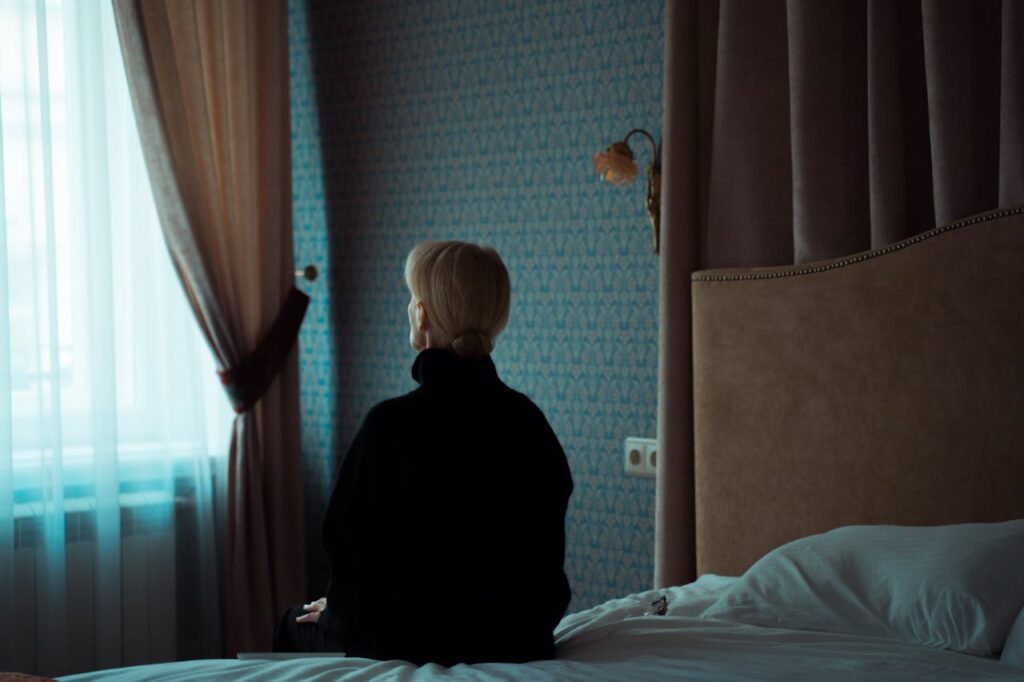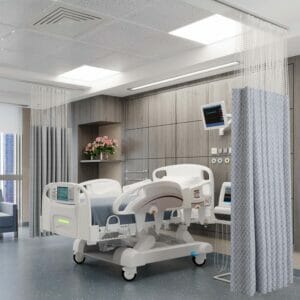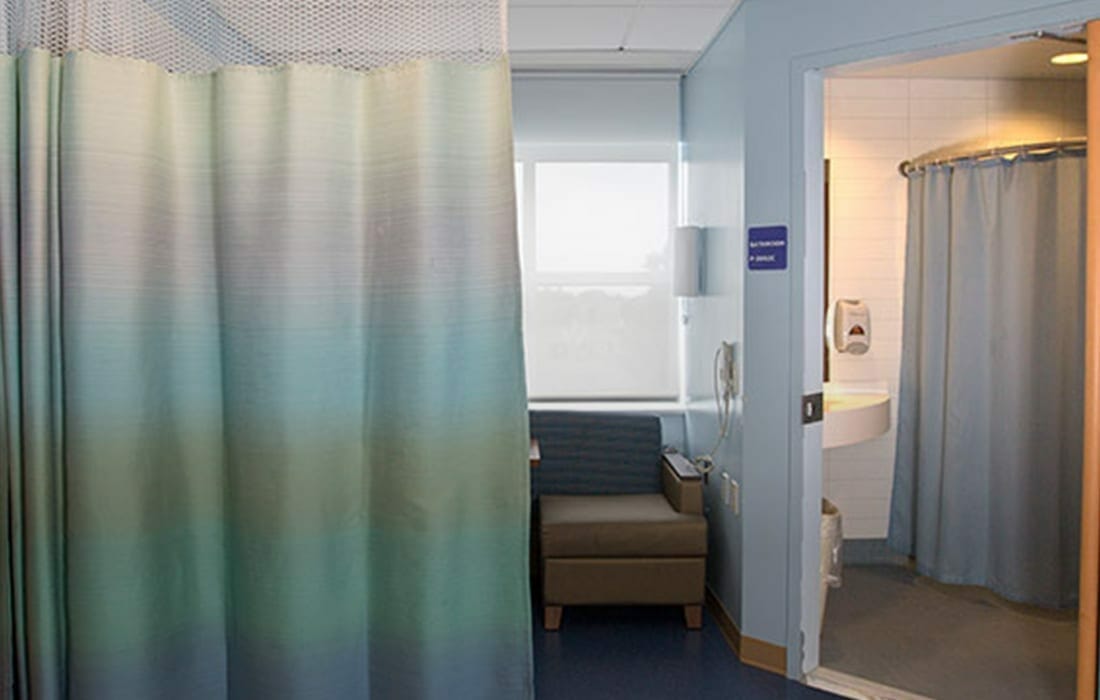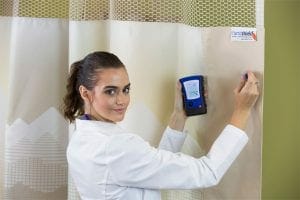Long-term care facilities play a vital role in the healthcare continuum, offering both medical oversight and emotional support for aging or chronically ill individuals. From assisted living communities to skilled nursing centers, these environments must balance compassion with clinical responsibility. A growing number of facility administrators are realizing that seemingly minor decisions—like how privacy curtains are managed—can have a significant impact on infection control, operational efficiency, and budget performance.
The choice to rent privacy curtains instead of owning them outright is one that more long-term care providers are now making. On the surface, curtains may appear to be a minor operational detail. But for organizations committed to delivering quality care, maintaining regulatory compliance, and optimizing limited resources, the shift to privacy curtain rental services represents a smarter, more sustainable solution.
This blog explores why long-term care facilities across the country are moving away from curtain ownership and embracing the rental model—and how doing so can dramatically improve safety, service, and savings.
The Reality of Healthcare in Long-Term Care Settings
Unlike hospitals or surgical centers, long-term care facilities are not designed for high-acuity, short-stay interventions. Instead, they focus on ongoing care and monitoring, often for individuals who require assistance with daily activities and chronic disease management.
However, infection prevention remains just as critical in these environments. Residents may have compromised immune systems, underlying health conditions, or increased vulnerability to pathogens. Moreover, the communal nature of long-term care settings—shared dining areas, therapy rooms, and common restrooms—raises the risk of cross-contamination.
Infection control in long-term care requires proactive hygiene management of all patient-contact surfaces, including an often-overlooked component: privacy curtains.

Why Privacy Curtains Matter More Than You Think
In long-term care settings, privacy curtains serve a dual purpose: they offer dignity and discretion during care interactions, and they act as a barrier between residents in shared spaces. However, they are also high-touch surfaces—regularly handled by staff, residents, and visitors.
Without a consistent and professional cleaning schedule, privacy curtains can harbor dangerous pathogens like:
-
MRSA (Methicillin-resistant Staphylococcus aureus)
-
C. difficile
-
VRE (Vancomycin-resistant Enterococci)
-
Norovirus
Infrequent curtain cleaning or inconsistent replacement policies create significant exposure risks—particularly in facilities with vulnerable populations. Yet many facilities still rely on in-house curtain ownership, unaware of the burdens and limitations it brings.
The Problems with Curtain Ownership in Long-Term Care
Ownership might seem like a logical choice. You buy the curtains once, hang them, and replace them when needed—right? But in practice, this model comes with a range of ongoing costs and challenges that often go unnoticed until they create operational bottlenecks or compliance gaps.
Common challenges of curtain ownership include:
-
Lack of staff to manage cleaning or replacements
-
Insufficient storage for clean inventory
-
No consistent cleaning schedule
-
Damage or loss with no protection
-
Manual documentation vulnerable to error
Each of these issues not only disrupts operations but also increases the risk of regulatory penalties. For a deeper breakdown of the financial and operational strain caused by curtain ownership, refer to this comprehensive guide: The Hidden Costs of Owning vs. Renting Privacy Curtains.
What Makes Privacy Curtain Rental Different?
Privacy curtain rental services are a full-service solution that eliminates the need for in-house inventory management and laundering. Instead of buying and maintaining curtains, facilities partner with a provider who installs, cleans, replaces, and tracks the curtains on a routine basis.
This arrangement offers long-term care facilities:
-
Pre-scheduled curtain change-outs
-
On-demand replacements for soiled or damaged units
-
Professional-grade laundering
-
Digital service documentation
-
No need to store inventory or assign internal staff to manage it
These benefits are especially valuable in long-term care, where staff are already stretched thin and infection control requires unwavering consistency.
Why the Switch Is Happening Now
The trend toward privacy curtain rental in long-term care has accelerated in recent years due to:
1. Stricter Infection Control Expectations
Federal and state regulations have increased scrutiny around how long-term care facilities prevent infections. Failing to maintain curtain hygiene can result in deficiencies during audits.
Curtain rental programs provide the structure and documentation needed to meet these expectations. As outlined in this blog on infection control, rental services support compliance by automating cleaning cycles and maintaining audit-ready logs.
2. Financial Predictability
Long-term care facilities often operate under tight budget constraints. With curtain rental, costs are consolidated into a flat monthly fee that covers everything: installation, replacements, cleaning, and support.
This eliminates unexpected expenses related to:
-
Emergency curtain replacements
-
Staff overtime for curtain change-outs
-
Outside laundering or disposal fees
Predictable expenses make financial planning easier and more transparent, especially when reimbursement rates and occupancy levels fluctuate.
3. Labor Shortages and Staff Burnout
The healthcare staffing crisis continues to impact long-term care disproportionately. CNAs, nurses, and housekeepers are managing heavier workloads, leaving little time for secondary tasks like curtain management.
By offloading curtain maintenance to a rental provider, facilities free up valuable staff time, reduce burnout, and allow frontline teams to focus on resident care instead of logistical tasks.
4. Improved Infection Outcomes
Rental services implement commercial-grade laundering and infection-prevention protocols that go beyond the capabilities of most in-house cleaning setups. These enhanced cleaning practices are essential for stopping the spread of viruses and bacteria among residents and staff.
Operational Efficiencies You Can’t Ignore
Privacy curtain rental services don’t just improve infection control—they create ripple effects across your entire operation. Here’s how:
-
Faster room turnovers with pre-scheduled curtain changes
-
Reduced downtime for resident transfers or admissions
-
**Fewer delays due to missing or dirty curtains
-
Streamlined audits thanks to automated service documentation
Each of these improvements contributes to a more responsive, professional, and resident-friendly care environment.
Inventory Flexibility Without Storage Burdens
One of the lesser-known benefits of curtain rental is inventory flexibility. Providers like HAIGuard™ ensure facilities have access to more curtains than are installed, often offering up to 125% inventory coverage.
That means if a curtain becomes unexpectedly soiled, damaged, or lost, there’s always a replacement ready—without having to dip into your own limited storage space.
This flexibility is particularly useful for long-term care facilities with limited square footage and variable census numbers.
Customization That Still Meets Compliance
Curtain rental programs also offer style and function options to meet the specific needs of long-term care residents:
-
Fire-retardant materials
-
Antimicrobial fabrics
-
Calming color palettes
-
Patterns that reduce institutional feel
These features contribute to resident comfort and dignity while still meeting infection control and regulatory standards.
Built-in Loss Protection for Peace of Mind
Curtain damage and loss are common in long-term care—accidental tearing, staining, or resident mishandling can all require quick replacements.
Rental programs typically include loss reserve protection, meaning replacements are covered under the service agreement. This eliminates:
-
Procurement delays
-
Budget reallocation
-
Reimbursement hassles
It also removes hesitation from staff who might otherwise delay a replacement due to perceived cost or administrative complexity.
Seamless Documentation for Survey Readiness
Long-term care administrators know that survey readiness is a daily priority. Whether your facility undergoes annual licensing, Medicare certification reviews, or infection control audits, documentation is critical.
Rental providers offer:
-
Curtain-specific cleaning records
-
Automated service reports
-
Access to compliance dashboards
-
Barcode tracking of curtain locations and service dates
These tools help you stay ready for inspections and demonstrate your facility’s proactive infection control practices.
Addressing Common Concerns About Curtain Rental
Some administrators may hesitate to switch to a rental program due to concerns about:
-
Long-term contracts
-
Loss of control
-
Limited fabric options
-
Service disruptions
In reality, most reputable providers offer flexible agreements and personalized services. Facilities can still choose from a wide range of materials, colors, and replacement timelines that suit their environment. The provider’s responsibility is to adapt to your operations—not the other way around.
A Closer Look at the HAIGuard™ Approach
HAIGuard™ is committed to delivering smart, safe, and seamless privacy curtain solutions for healthcare providers—including long-term care facilities.
Their rental services include:
-
Initial site surveys and custom measurements
-
Professional installation and tracking
-
Ongoing cleaning, repair, and replacement
-
Reporting tools for infection control audits
-
Inventory management and surplus coverage
With HAIGuard™, your facility can focus on resident care, while knowing that curtain hygiene and compliance are handled with expert precision.
Making the Switch: What to Expect

Transitioning to a rental program doesn’t have to be disruptive. In most cases, providers conduct a free facility assessment, install initial inventory, and integrate service cycles into your existing workflow.
Here’s a typical timeline:
-
Assessment and proposal
-
Measurement and curtain selection
-
Installation with barcoding or tracking tags
-
Scheduled service rotation begins
-
Ongoing support and reporting access
The entire process can often be completed within a few weeks—with little to no interruption to care delivery.
The Future Is Rental
Long-term care is evolving. Residents are staying longer, regulations are growing tighter, and staff are carrying heavier loads. In this environment, anything that simplifies operations while enhancing compliance and resident safety is worth serious consideration.
That’s why more and more long-term care facilities are switching to privacy curtain rental services. It’s not just about outsourcing a task—it’s about transforming how you approach infection control, budgeting, and day-to-day efficiency.
In a field where margins are tight and outcomes matter, smart operational decisions make all the difference. Renting privacy curtains is one of them.








